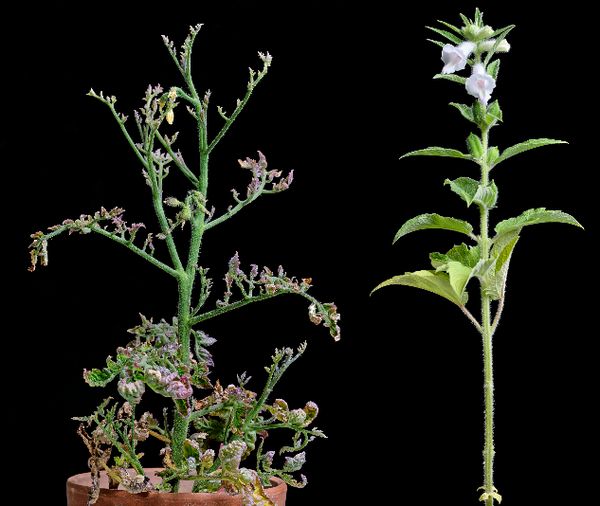Introduction
Sesame acreage across North Carolina is increasing. As an alternative warm-season oilseed, sesame appears to be a good fit for our traditional row cropping systems. Small plot trials in 2021 and 2022 demonstrated that with proper planting depth and weed management, we can obtain sesame yields that are comparable to the traditional production regions of Texas and Oklahoma. Furthermore, a preliminary greenhouse study found that sesame appears to be resistant to most root-knot nematode species, including Guava root-knot nematode (Figure 1; M. enterolobii).
In 2023, we expanded our sesame research to on-farm trials across the state to understand crop performance in broad acreage, real-world scenarios. When introducing a new crop, it is important to understand how it may influence the rotation. Factors to include are economics, management schedules, potential chemical carryover, and pest and disease cycles. As such, we wanted to understand how sesame might affect root-knot nematode populations on land with a history of this pest.
Farm Description
Three farms in Wilson County planted approximately 17 acres of sesame each. These farms traditionally produce soybean, corn, grain sorghum, sweetpotato, wheat, and tobacco. All three farms grew soybeans during the 2022 season prior to sesame. Preseason soil samples were collected on all farms in spring 2023 prior to sesame planting. We created aerial maps of each field and then divided them into a grid comprised of 8 – 17 1-ac blocks. We collected soil samples in a random pattern within each block. Samples were once again collected in spring 2024 to understand how the preceding sesame crop may impact nematode populations. All nematode assays were conducted by the NC State Plant Nematology Lab.
Results
We saw a significant decrease in nematode populations in all three farms after sesame (Figure 2). The initial average number of nematodes was 1,026, 1,448, and 1,777 per 500cc soil for farms 1, 2, and 3, respectively. After sesame, these numbers dropped to 71, 94, and 41 per 500cc soil, representing a population decrease of 81, 94, and 97%.
The highest three samples from 2023 were molecularly diagnosed to determine which nematode species was present. All three samples were positive for Guava root-knot nematode.
Key Takeaways
More rigorous testing is required to understand sesame’s effect on specific root-knot nematode species populations, but these are very promising preliminary results. If these trends hold, sesame may play an important role as both an IPM tool and a profitable rotation crop
Publication date: June 3, 2024
N.C. Cooperative Extension prohibits discrimination and harassment regardless of age, color, disability, family and marital status, gender identity, national origin, political beliefs, race, religion, sex (including pregnancy), sexual orientation and veteran status.


